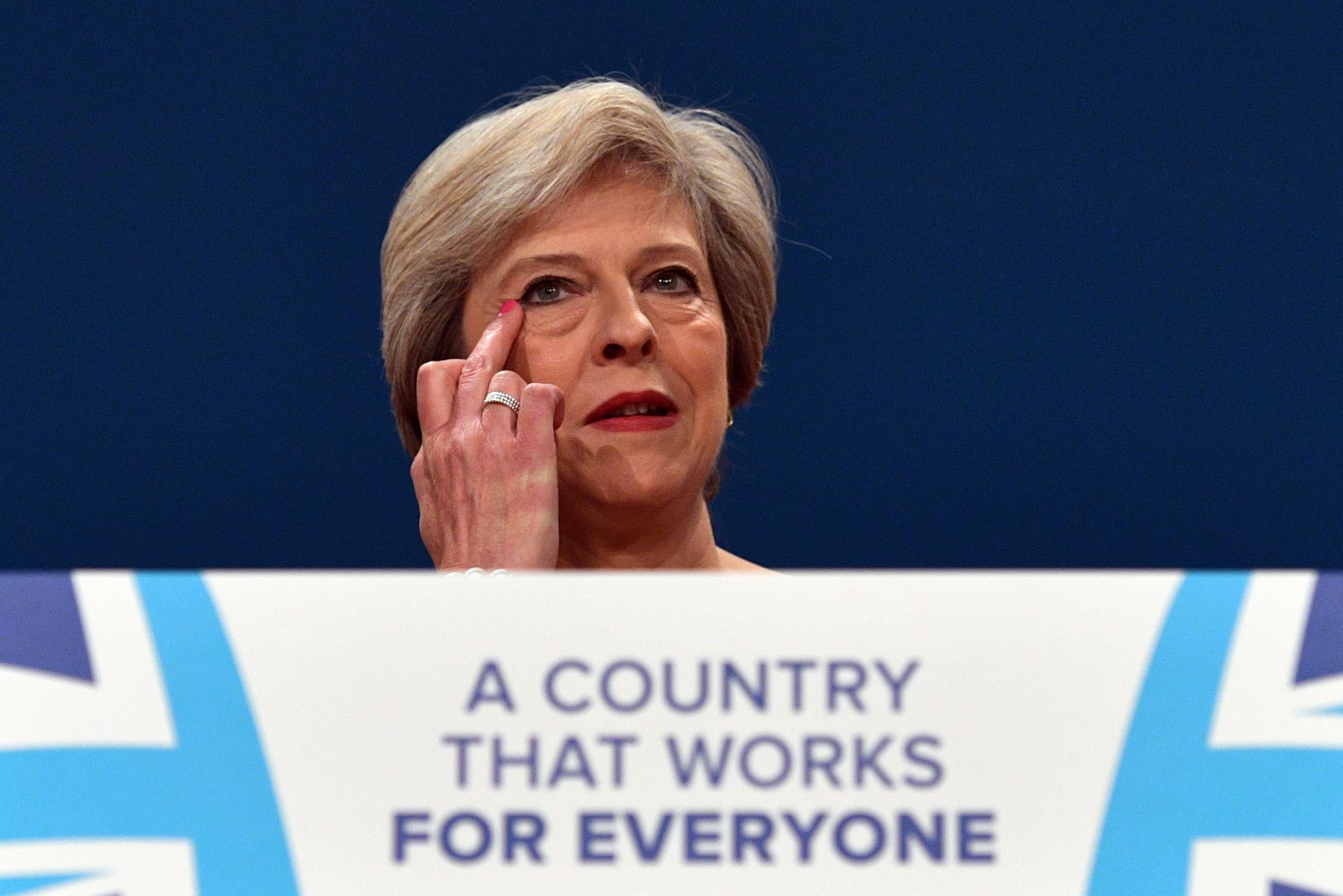The Bank of England has rightly told Theresa May she doesn’t know what she’s talking about on interest rates
The price of giving savers more interest today would be weaker GDP and higher unemployment


At her Conservative Party conference speech in October, Theresa May took the central grievance of the savings lobby and blessed it with all the authority of the office of the Prime Minister.
“While monetary policy – with super-low interest rates and quantitative easing – provided the necessary emergency medicine after the financial crash, we have to acknowledge there have been some bad side effects,” she told the hall. “People with savings have found themselves poorer.” In other words, the Bank of England has been gratuitously punishing savers.

It passed under the media’s radar last week but the Bank, in its latest Inflation Report, delivered a firm and comprehensive rejection of this line of thinking.
The rejection was delivered in dry and technical economic language but the implied thrust of the analysis was that those like the Prime Minister who argue that low interest rates are solely the responsibility of the Bank of England do not know what they are talking about.
This might sound bizarre. Everyone knows the Bank of England sets interest rates for the economy. Who else could be responsible?
But, as the Bank points out, there is vital distinction between short-term and long-term interest rates. While it’s true the Bank controls short-term rates, long-term rates are determined by the balance between savings and investments, not just in the UK but in the global economy.
If firms and households collectively are keen to increase their savings and if there is simultaneously little willingness among private sector agents to invest those savings, the natural consequence is that long-term interest rates will fall. And there is a range of powerful factors that have been weighing down on long-term rates in the UK and other advanced economies for almost three decades.
One of these is demographics. As Western populations age and longevity increases, individuals try to save more to finance their retirements. Another is inequality. More wealth and income have become concentrated in fewer hands since the early 1980s. Since richer people tend to save more, this has also pushed up savings across the economy. Furthermore, developing countries, especially China, have been stockpiling safe Western government debt since the 1990s to insure themselves in the event of a regional financial crisis, which also pushes up global savings.
On the investment side, there have been several depressing factors too. Since the profound shock of the financial crisis, investors have been less willing to hold riskier assets, rather than safe government bonds. This has contributed to weaker investment spending. Public sector investment has been falling in many countries, particularly due to the synchronised turn to austerity policies by numerous governments since 2010. The short-termism of the bosses of many big stock market listed firms in the era of “shareholder value” also seems to have curbed investment appetite.
It’s difficult to say with any confidence what the relative contribution of these factors is but they have all likely played a role in pushing down long-term interest rates.
Faced with these pressures, which intensified significantly after the global financial crisis, the Bank of England could indeed have raised short-term interest rates, as demanded by the savings lobby. This would have given savers better returns in the immediate term. Yet the consequence of forcing up the short-term cost of borrowing, while the long-term cost remained extremely depressed, would almost certainly have been to undermine the recovery by choking off spending and undermining confidence.
The Bank of England and the rest of the world’s central banks would doubtless love to raise interest rates to the levels that were considered “normal” before the financial crisis, not least to get frustrated savers off their back. But the fact is that long-term rates remain much too low for them to dare to do that.
The Bank hopes that by keeping short-term rates super-low the private sector will be encouraged to increase investment, boosting economic growth and bolstering general confidence, thus long-term interest rates will start to rise and short-term rates after that.
It’s quite true that this has been less successful than hoped for and is taking an agonisingly long time. But there is no reason to believe that the alternative policy – raising rates sharply regardless of long-term rates – would be a lot more effective in restoring confidence.
The price of giving savers more interest today would be weaker GDP and higher unemployment. Given that everyone – even savers ultimately – relies on the underlying vigour of the economy for their economic wellbeing, this would be a singularly counterproductive policy.
In all likelihood, such a premature increase of short-term rates would have to be rapidly reversed, which is precisely what happened when the European Central Bank put up rates in 2011, partly out of a desire to benefit savers and return to normality. It had to slash them within months as the eurozone economy went into a downturn.
The global economy is still in a malaise, as the International Monetary Fund stressed in its most recent report. The UK economy is expected to slow down markedly by most economists as a result of the Brexit vote.
If people want to see a sustainable increase in short-term interest rates, they should focus their attention on those aspects of the problem that are tractable: by pushing for more government infrastructure spending, lifting the curse of stock market short-termism and reducing income and wealth inequalities.
The road to higher interest rates and normal returns for savers lies not through ignorant sniping at central banks but through major reforms of the structure of our economy and the incentives within it.
Join our commenting forum
Join thought-provoking conversations, follow other Independent readers and see their replies
Comments